Following is a sample of the error I'm getting. The code names and such have been changed to make it more readible and it has been 'dumbed down' to just show the parts I'm having trouble with.
TABLE STRUCTURE:

SUMMARY
I'm trying to add a new CHILD item along with an ADDRESS using Entity Framework 3.5 and I'm getting duplicate entry errors when I use 2 entitykey references in the process.
CODE EFFORTS
First I tried to use parent references while creating my entity's:
public bool AddChild(Guid parentId, string firstName, string lastName, string address, string city, int provinceCode)
{
bool success = false;
using (Entities e = new Entities("connection string")
{
// prep address record
ADDRESS a = new ADDRESS
{
City = city,
Address = address,
PROVINCEReference = new System.Data.Objects.DataClasses.EntityReference<PROVINCE> { EntityKey = new System.Data.EntityKey("Entities.PROVINCEs", "ID", provinceCode) },
};
// prep owner record
CHILD c = new CHILD
{
PARENTReference = new System.Data.Objects.DataClasses.EntityReference<PARENT> { EntityKey = new EntityKey("Entities.PARENTs", "ID", new Guid(parentId)) },
ADDRESS = a,
FirstName = firstName,
LastName = lastName,
};
using (System.Transactions.TransactionScope transaction = new System.Transactions.TransactionScope())
{
try
{
e.AddToCHILDs(c);
e.AddToADDRESSes(a);
// Save changes pessimistically. This means that changes must be accepted manually once the transaction succeeds.
e.SaveChanges(false);
}
catch { }
}
}
return success;
}
This doesn't work if I try to reference both foreign keys; however, if I just try to reference one or the other it works fine. The first one will always work. The second one will give the error. It doesn't matter what order they are in. If I use them by themselves or in other methods just like this, they work fine.
I also tried to get actual items rather than just references such as:
PARENT o = e.PARENTs.First(x => x.ID.Equals(id));
PROVINCE p = e.PROVINCEs.First(x => x.ID.Equals(1));
a.PROVINCE = p;
c.ADDRESS = a
c.PARENT = o;
And, I tried playing with the .Attach() method after finding similar errors:
e.Attach(p);
e.Attach(o);
When I do it the first way (my preferred manner), whichever item is added first will work with no issues. When I try the second one I'm getting an error (An item with the same key has already been added). If I try to do it by pulling the actual records rather than just using a reference I'm getting the same type of error directly from the SQL Server 2005 database.
It makes sense after reading about this that it has to do with the Context and the fact that the code may be referencing 2 different versions of the parent records; however, I can't find a good way around it.
All I want to do in the end, is to insert a child record with a new address. The child record must reference the parent record and the address record must reference the province record. Preferrably, I'd like to do this via references to cut down on the sql transactions.
Thanks!
EDIT
Tried to create 2 of my own seperate entityKey objects and 2 seperate EntityReference<> objects and now I'm getting the following error when I try to use the second EntityReference<> object to assign the relationship/reference:
The EntityReference could not be initialized, because the relationship manager for object to which the entity reference belongs is already attached to an ObjectContext.
EDIT
Using a workaround that doesn't need any relationship/reference information from Alex's answer at: Entity Framework EntityKey / Foreign Key problem
I would still prefer not to use this because it forces you to have to do checks to see what info is already in the context and then it creates "fake" records to get through it as a work-around. If anyone has any more info I'd love to hear!